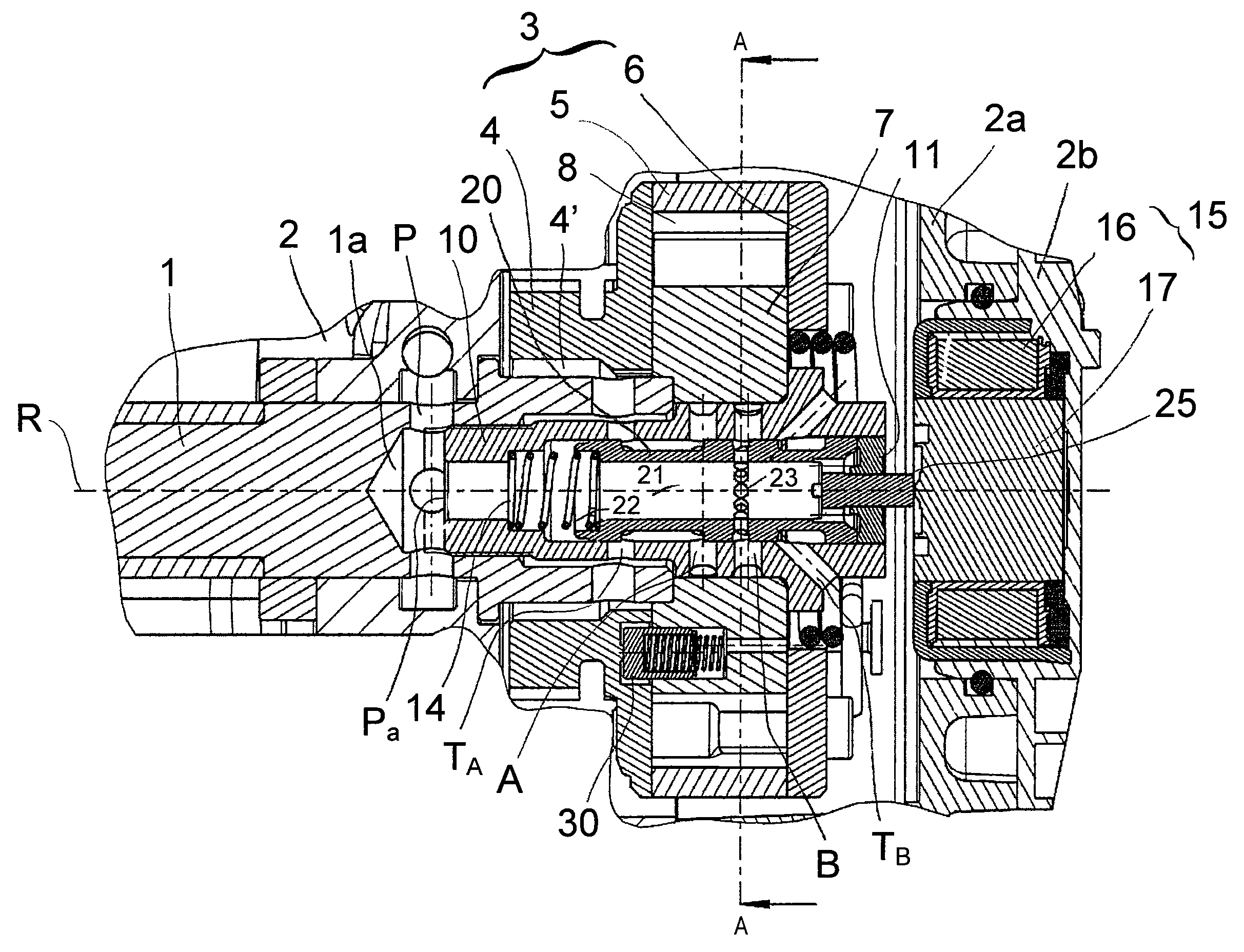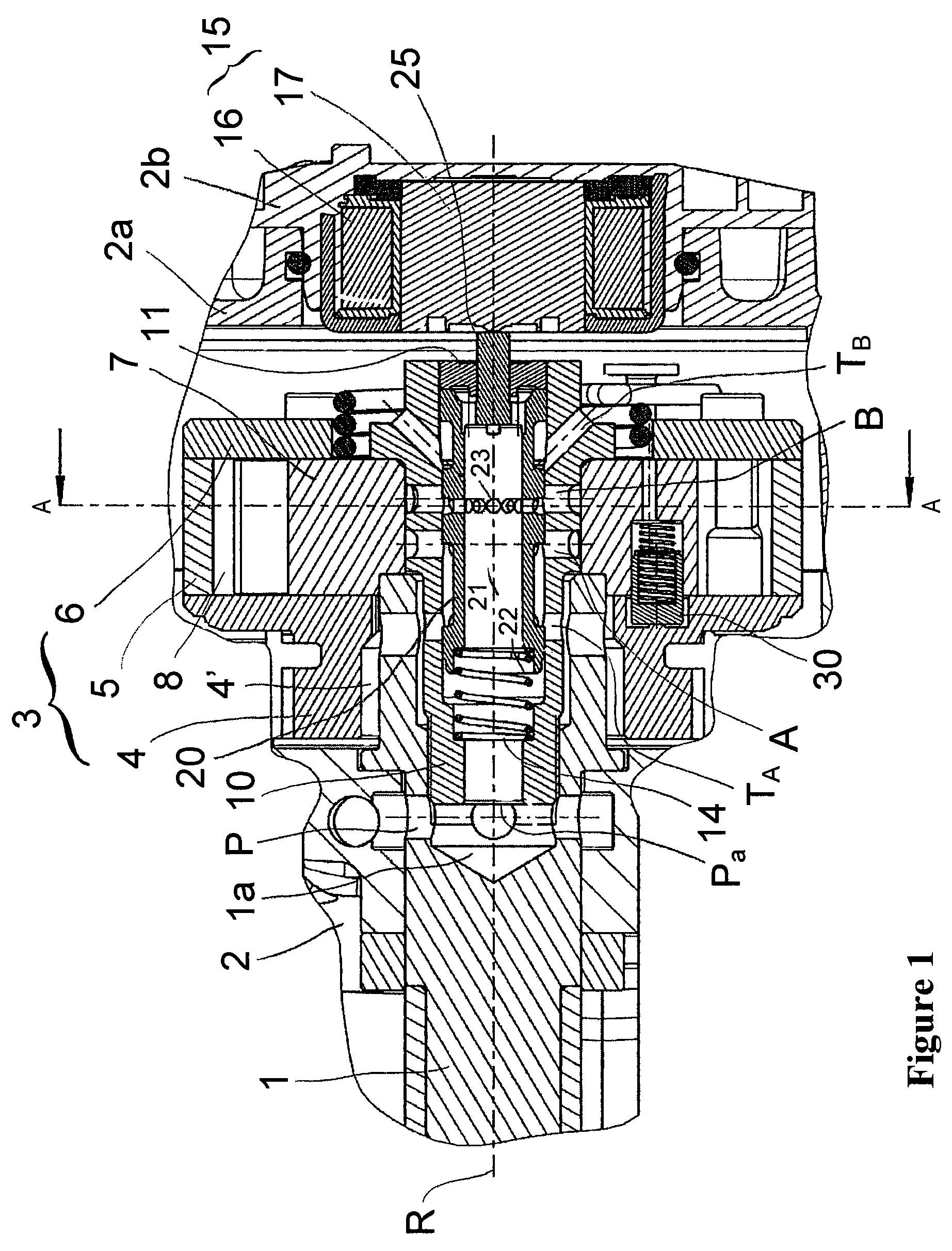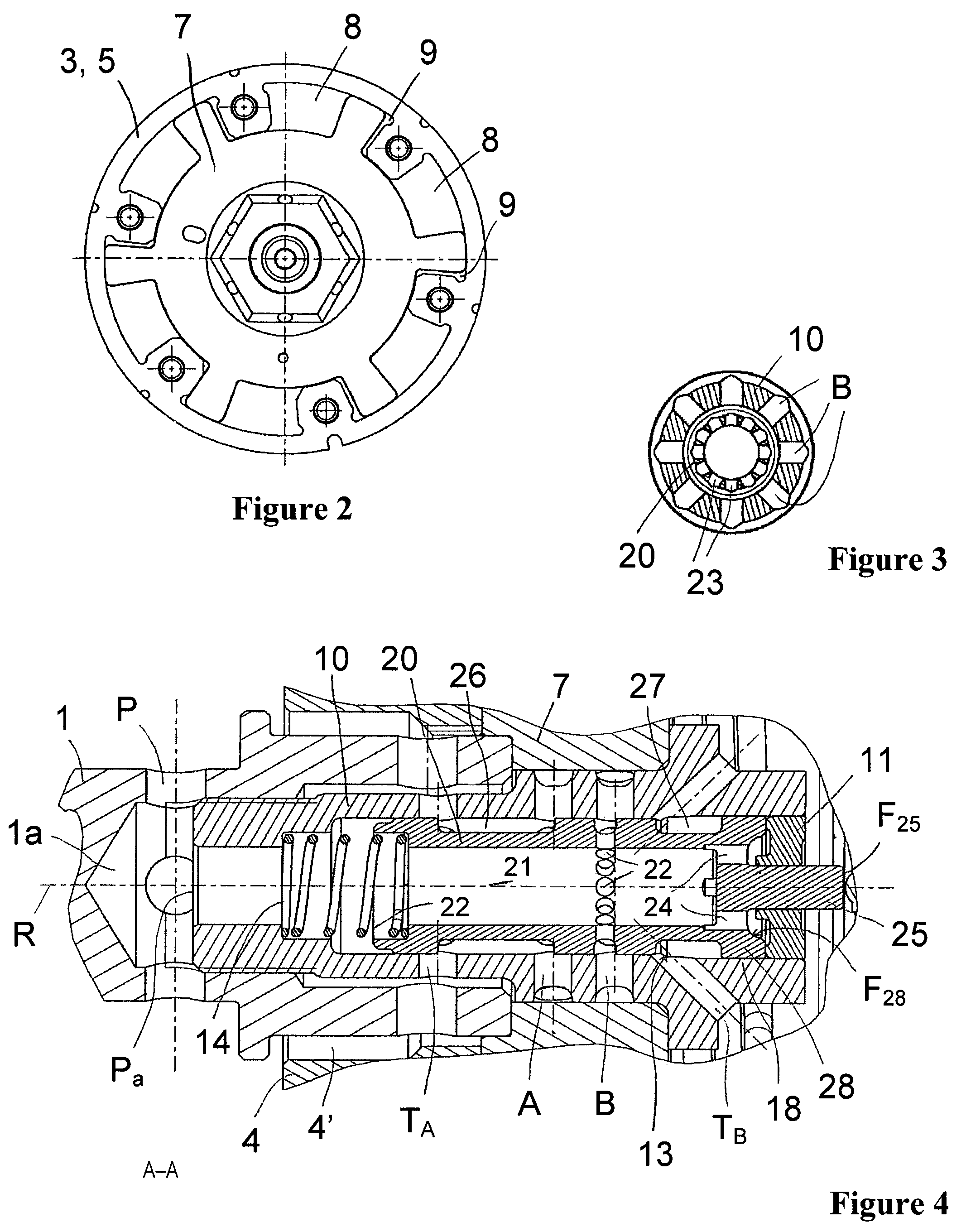Cam shaft phase setter comprising a control valve for hydraulically adjusting the phase position of a cam shaft
a technology of cam shaft and control valve, which is applied in the direction of cams, engine lubrication, electrical equipment, etc., can solve the problems of increased design expense and significant additional costs, difficult to configure channels, and high cost of channel guides
- Summary
- Abstract
- Description
- Claims
- Application Information
AI Technical Summary
Benefits of technology
Problems solved by technology
Method used
Image
Examples
Embodiment Construction
[0055]FIG. 1 shows a cam shaft phase setter in a longitudinal section. The cam shaft phase setter is arranged at an end of a cam shaft 1 on the axially facing side and serves to adjust the phase position, i.e. the rotational angular position, of the cam shaft 1 relative to a crankshaft of an internal combustion engine, for example a drive motor of a motor vehicle. The cam shaft 1 is rotatably mounted such that it can be rotated about a rotational axis R in an engine housing 2 of the internal combustion engine, usually in a cylinder head housing.
[0056]The cam shaft phase setter comprises a stator 3 which can be rotary-driven by the crankshaft, and a rotor 7 which is connected, rotationally fixed, to the cam shaft 1. The stator 3 is composed of a drive wheel 4, for example a sprocket, a cover 6 and an impeller wheel 5 which is axially arranged between the drive wheel 4 and the cover 6. The drive wheel 4, the impeller wheel 5 and the cover 6 are connected, rotationally fixed, to each o...
PUM
 Login to View More
Login to View More Abstract
Description
Claims
Application Information
 Login to View More
Login to View More - R&D
- Intellectual Property
- Life Sciences
- Materials
- Tech Scout
- Unparalleled Data Quality
- Higher Quality Content
- 60% Fewer Hallucinations
Browse by: Latest US Patents, China's latest patents, Technical Efficacy Thesaurus, Application Domain, Technology Topic, Popular Technical Reports.
© 2025 PatSnap. All rights reserved.Legal|Privacy policy|Modern Slavery Act Transparency Statement|Sitemap|About US| Contact US: help@patsnap.com



